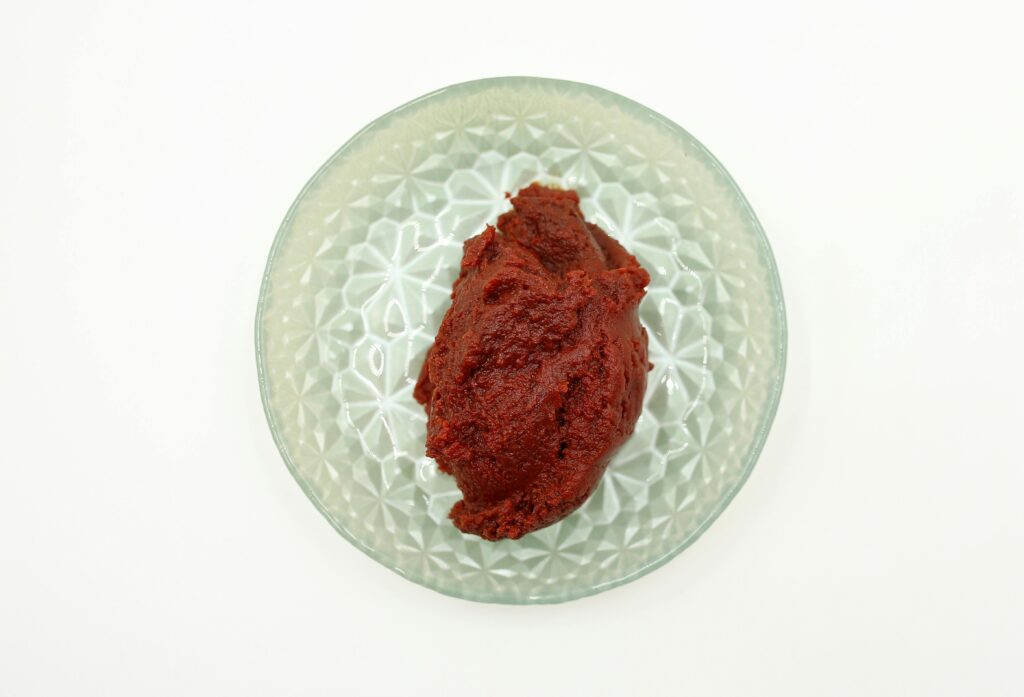HOMEMADE TOMATO PASTE: NO ADDITIVE, NO SUGAR
In today’s world where store-bought foods are often loaded with preservatives, artificial sweeteners, and other chemical additives, many people are seeking healthier, natural alternatives. One essential kitchen ingredient you can easily make at home is tomato paste — without additives or sugar. Homemade tomato paste not only offers better flavor, but it also ensures you’re feeding your family only the purest ingredients.
In this article, we’ll explore what tomato paste is, how to make it at home, the benefits of doing so, and why ditching additives and sugar is important.
What Is Tomato Paste?
Tomato paste is a thick, concentrated form of tomatoes that have been cooked down, strained, and reduced to remove excess water. It’s a flavor-packed base often used in cooking soups, sauces, stews, curries, and more.
While commercial tomato paste may seem convenient, it often contains preservatives, refined sugars, and even artificial colors that dilute its natural goodness. Homemade tomato paste allows you to enjoy tomatoes in their purest, most flavorful form.
Why Make Tomato Paste at Home?
No Additives
Most commercial products contain citric acid, calcium chloride, or sodium benzoate to extend shelf life. While legal, these additives can cause allergies or sensitivities in some individuals. Homemade tomato paste contains only natural ingredients, keeping your meals clean and chemical-free.
No Added Sugar
Store-bought tomato paste often contains added sugars to enhance taste. This is problematic for people managing diabetes, obesity, or those who simply want to avoid unnecessary sweeteners. Homemade tomato paste lets you control your ingredients and skip the sugar.
Fresh Flavor
Homemade tomato paste delivers a rich, deep tomato flavor that’s hard to beat. The slow cooking process enhances the natural sweetness and umami of the tomatoes without the need for flavor enhancers.
Budget-Friendly
Buying canned tomato paste repeatedly adds up. Making your own in bulk when tomatoes are in season saves money and reduces waste (no more tin cans piling up!).
Eco-Friendly
Making tomato paste at home reduces your reliance on packaged goods, cutting down on plastic and metal waste. It’s a small step with a big environmental impact.
How to Make Homemade Tomato Paste (Step-by-Step)
Ingredients:
2.5 to 3 kg (5–6 lbs) of ripe tomatoes (preferably Roma or plum tomatoes)
1 teaspoon sea salt (optional)
1 tablespoon olive oil (optional, for smoother texture)
Instructions:
Step 1: Wash and Prep the Tomatoes
Wash the tomatoes thoroughly. Remove the stems and cut them in halves or quarters. If desired, remove the seeds for a smoother paste, but it’s not necessary.
Step 2: Cook the Tomatoes
Place the chopped tomatoes in a large pot and cook on medium heat for 30–40 minutes, stirring occasionally until they soften and release their juices.
Step 3: Blend and Strain
Let the tomatoes cool slightly. Blend them in a food processor or blender until smooth. Then, strain the puree using a fine sieve or food mill to remove skin and seeds.
Step 4: Cook Down the Purée
Pour the smooth tomato purée into a wide non-stick pan or baking tray. Cook on low heat, stirring occasionally. This may take 2–3 hours depending on the water content of the tomatoes. You can also dry it in the oven at a low temperature (around 120°C/250°F) for a slow reduction.
Step 5: Add Optional Oil
Once it’s thick and deep red, stir in a bit of olive oil for a silkier texture. Let cool.
Step 6: Store It Right
Refrigerator: Store in a clean airtight jar and refrigerate for up to 10 days.
Freezer: Use ice cube trays to freeze in portions. Store cubes in a zip-lock bag for up to 3–4 months.
Benefits of Homemade Tomato Paste
1. Rich in Nutrients
Tomatoes are an excellent source of:
Lycopene (a powerful antioxidant that supports heart health)
Vitamin C (boosts immunity)
Vitamin K1, Folate, and Potassium
Slow cooking concentrates these nutrients, especially lycopene, making homemade paste even healthier than raw tomatoes.
2. Allergy-Friendly
People with sensitivities to preservatives or sugar can safely enjoy homemade paste. It’s suitable for people on:
Vegan or Whole Food Diets
Low-Sugar or Diabetic Diets
Paleo or Mediterranean Diets
3. Versatile in Cooking
Homemade tomato paste is:
A base for soups and stews
A spread for pizzas and breads
An enhancer for sauces, beans, curries, and more
Just one spoonful adds depth and richness to any dish.
Why Avoid Commercial Tomato Paste?
Hidden Ingredients: Many brands don’t clearly list all preservatives or added sugars.
Cans May Contain BPA: Some tin cans are lined with BPA-based resins, which may leach into food.
High in Sodium: Some products contain excessive salt for taste and preservation.
Inferior Taste: Many are bland due to being overly processed.
Encouragement: Go Natural, Go Homemade
Making your own tomato paste isn’t just about cooking — it’s about choosing a healthier, cleaner lifestyle for you and your family. By switching to homemade, you’re avoiding hidden chemicals and giving your meals real, full-bodied flavor.
If you’re looking to reduce processed food in your diet, this is a great place to start.
For more inspiration and natural cooking ideas, check out this helpful guide from
https://glowwithgracenow.com/category/hearty-and-healthy/
Check Out More Posts
If you enjoyed this, you might also love:
More wholesome, preservative-free goodness is coming your way.


Pingback: HOW TO CURE COLD AND COUGH Naturally at Home - Glow With Grace Now